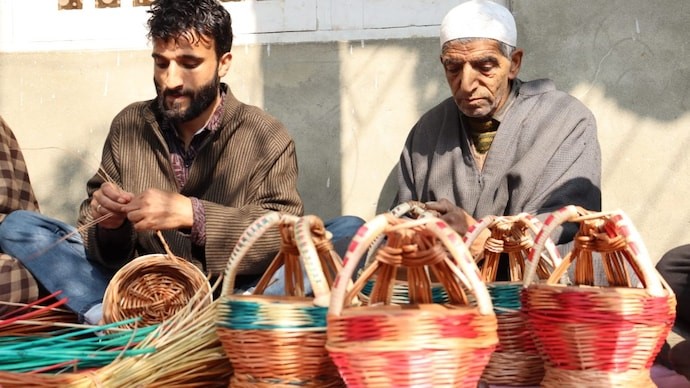Description

Disclaimer: Copyright infringement not intended.
Context
As winter tightens its icy grip on the Kashmir valley, the traditional fire pot known as “Kangri” is seeing a surge in demand. In the village of Wokai, located in South Kashmir's Kulgam district, artisans are working tirelessly to produce 5,000 Kangris each day to meet this seasonal spike.
Details
- Kangri is a traditional fire pot or portable heater used predominantly in the Kashmir Valley.
- It's an integral part of the local culture and plays a crucial role in the lives of Kashmiris, especially during the bitter cold winters.
Origins and Cultural Significance
- Historical Roots: The Kangri has been a part of Kashmiri culture for centuries, tracing its origins to the region's ancient traditions and the need for warmth in the harsh winter months.
- Symbol of Warmth and Comfort: It is not just a heating device but holds significant cultural symbolism, representing warmth, comfort, and companionship during cold weather.
Design and Construction
- Materials: Typically, Kangri is made from clay and twigs of the willow tree. The clay pot forms the base while the wickerwork around it provides insulation and protects the user from the direct heat.
- Shape and Structure: The Kangri consists of a round, earthenware pot filled with glowing embers or hot charcoal. It is then covered with a wicker casing, usually woven from willow twigs.
Utility and Functionality
- Heating Purpose: Its primary function is to provide warmth by emitting heat stored in the hot charcoal or embers. Kashmiris tuck the Kangri under their traditional long woolen cloaks called 'pherans' to keep themselves warm.
- Versatility: Kangri is not limited to personal use; it's also used to warm beds, and some families even use it for cooking simple meals or brewing Kahwa (a traditional Kashmiri tea).

Cultural Significance
- Symbol of Kashmiri Identity: The Kangri is deeply entrenched in Kashmiri culture and traditions, often featured in local literature, art, and folklore, symbolizing resilience and the spirit of survival in harsh conditions.
- Ceremonial Importance: It holds significance in ceremonies like marriages, where it symbolizes prosperity and well-being for the newlyweds.
Conclusion
The Kangri, with its rich historical significance and cultural symbolism, stands as a testament to the traditions and lifestyle of the Kashmiri people. While modernization has introduced alternative heating methods, the Kangri continues to hold a special place in the hearts of Kashmiris and remains a symbol of their identity and resilience.
|
PRACTICE QUESTION
Q. Which of the following best describes a Kangri?
a. A traditional Indian musical instrument used in folk performances
b. A type of indigenous blanket used by nomadic tribes in the Himalayas
c. A portable clay pot heater used for warmth in the Kashmir Valley
d. An ancient cooking utensil used by tribal communities in the northeastern region of India
Answer: c)
|















